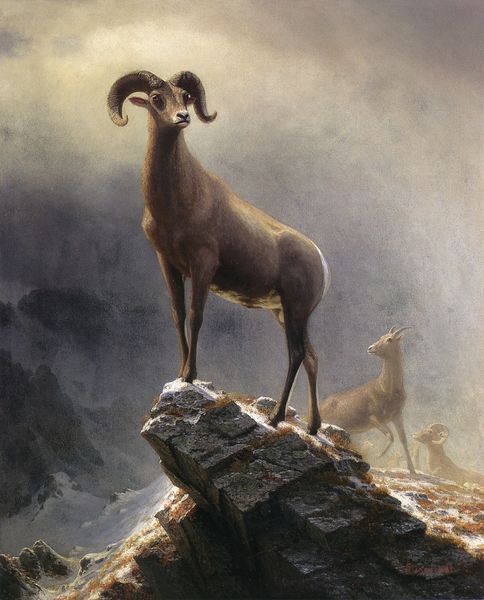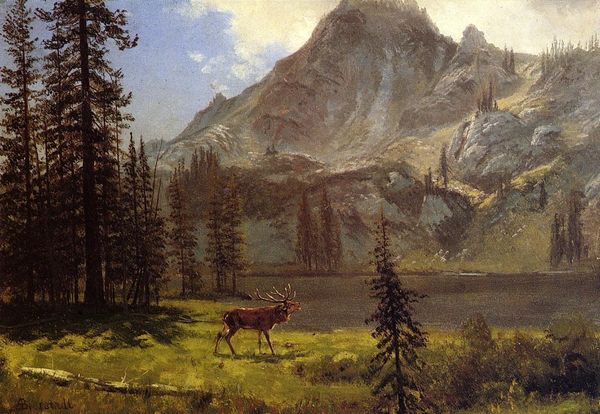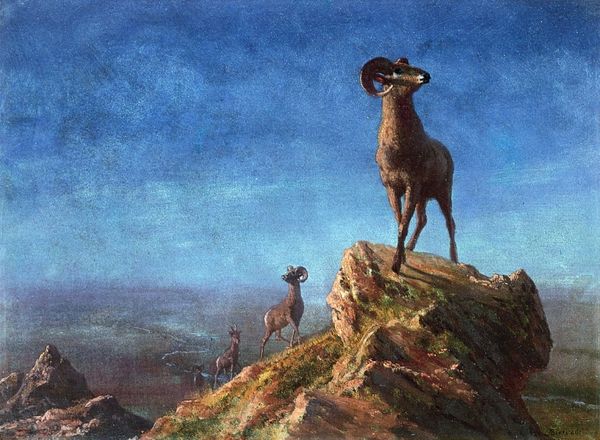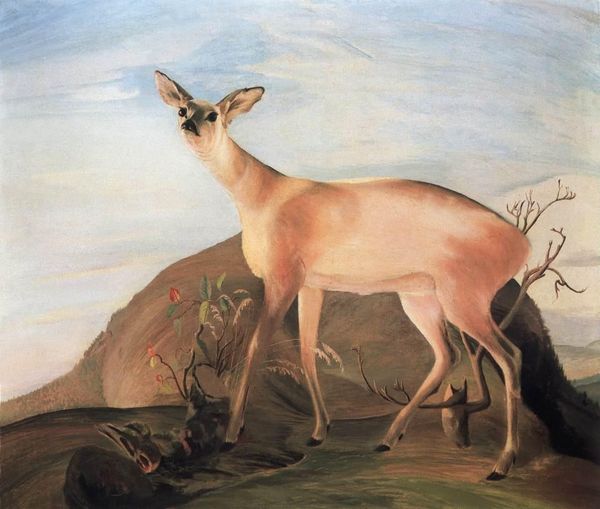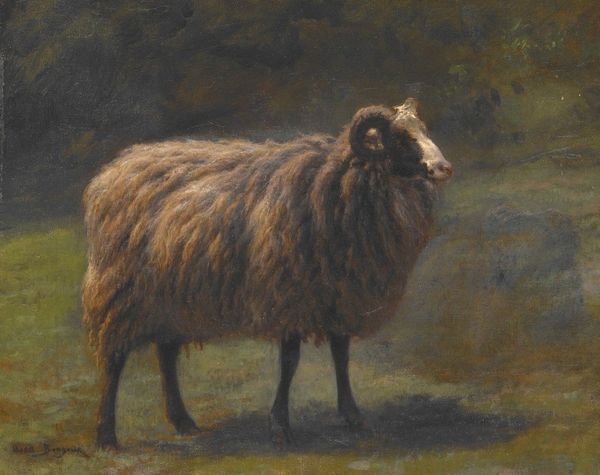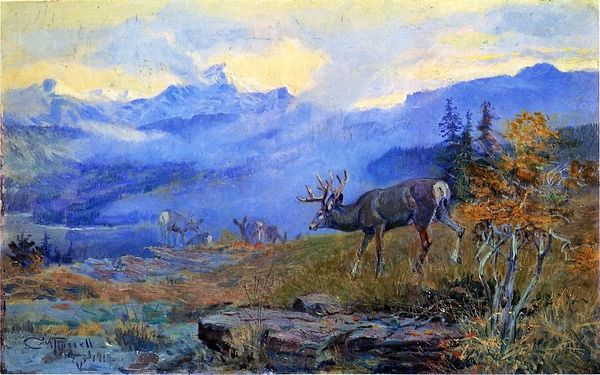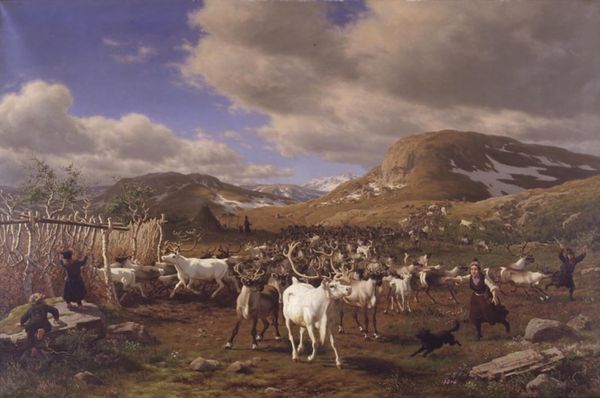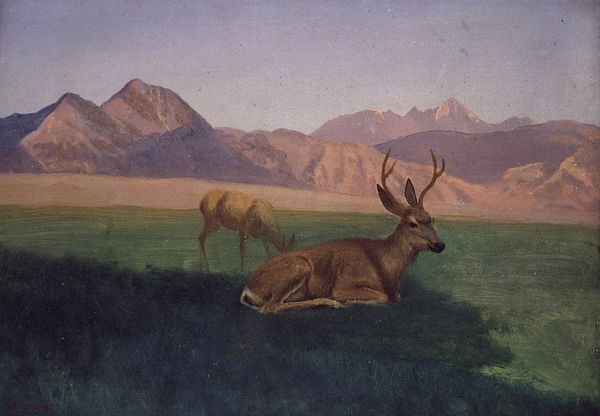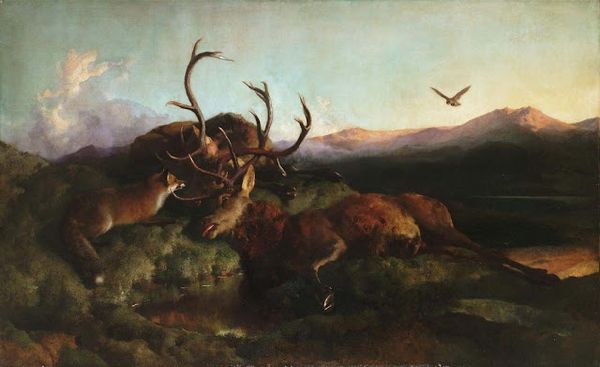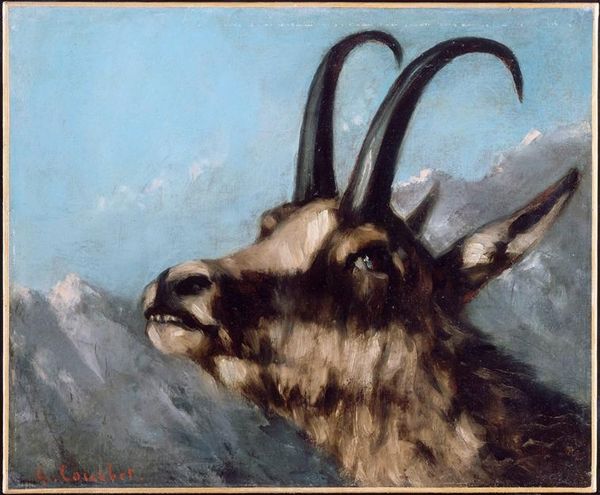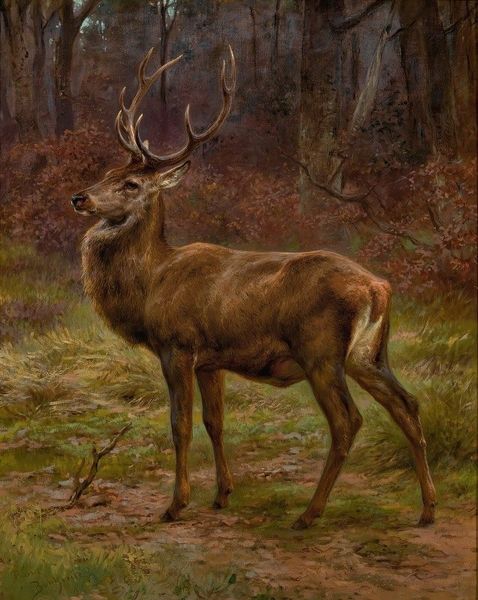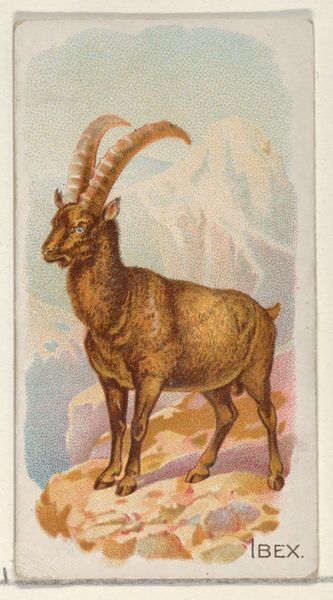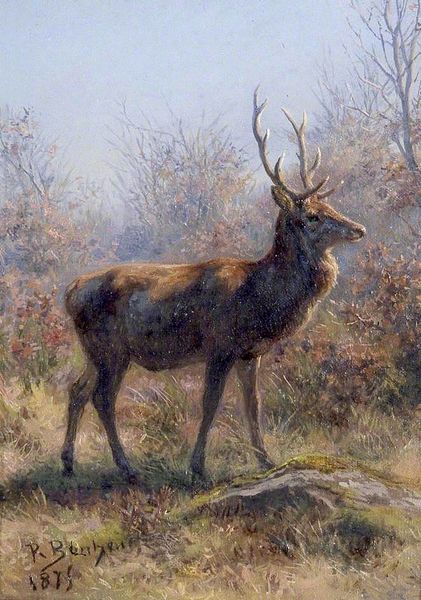
Dimensions: 34.92 x 48.26 cm
Copyright: Public domain
Curator: Here we have Albert Bierstadt's "A Rocky Mountain Sheep, Ovis, Montana" completed in 1879 using oil paint. Editor: What a noble beast! There’s something incredibly commanding about its posture, dominating that expansive, though somewhat subdued, landscape. Curator: Bierstadt was a master of capturing the grandeur of the American West, closely associated with the Hudson River School. One must remember, these depictions weren't merely landscape; they were promoting the idea of Manifest Destiny and the West as a land of unlimited potential and natural resources ripe for exploitation. Editor: Indeed, and speaking of resources, consider the actual materials employed. Oil paint, a medium enabling such incredible detail. The very production of the paints—the pigments, the linseed oil binder—reflects a growing industrial capacity of the time. What's compelling is how Bierstadt uses that industrial product to depict nature, framing this inherent contradiction within expanding industrial America. Curator: That contradiction extends further. Bierstadt’s paintings were highly sought after by wealthy industrialists. These were men who simultaneously contributed to environmental destruction while romanticizing a vanishing wilderness in their art collections. Editor: It becomes a commodity then, this idealized image of wilderness. I find it intriguing how Bierstadt presents this ram – practically a king on his mountain!– seemingly detached from any immediate human impact. The sheep becomes emblematic of the rugged, untouched West that these industrialists claimed to both cherish and were actively reshaping. Curator: The reception of this image would have certainly resonated differently across varied social groups. While wealthy patrons relished in its romantic nationalism, Indigenous populations were simultaneously being displaced and stripped of their land, a stark reality hidden behind the majestic facade. Editor: Exactly! We’re dealing with a carefully constructed narrative presented through this oil painting, where the manufacturing and distribution of this artwork contribute just as heavily as the representation itself in shaping these historical interpretations. Curator: I think acknowledging the social, material, and industrial underpinnings, helps us unravel some of the complex narratives this work presents. It serves as a reminder that landscapes aren’t neutral observations but, in fact, carriers of socio-political agendas. Editor: Agreed. And analyzing art in that way provides a potent means to understand those complicated relationships—revealing not only how we perceived nature then, but, vitally, how these notions evolved into present challenges.
Comments
No comments
Be the first to comment and join the conversation on the ultimate creative platform.
